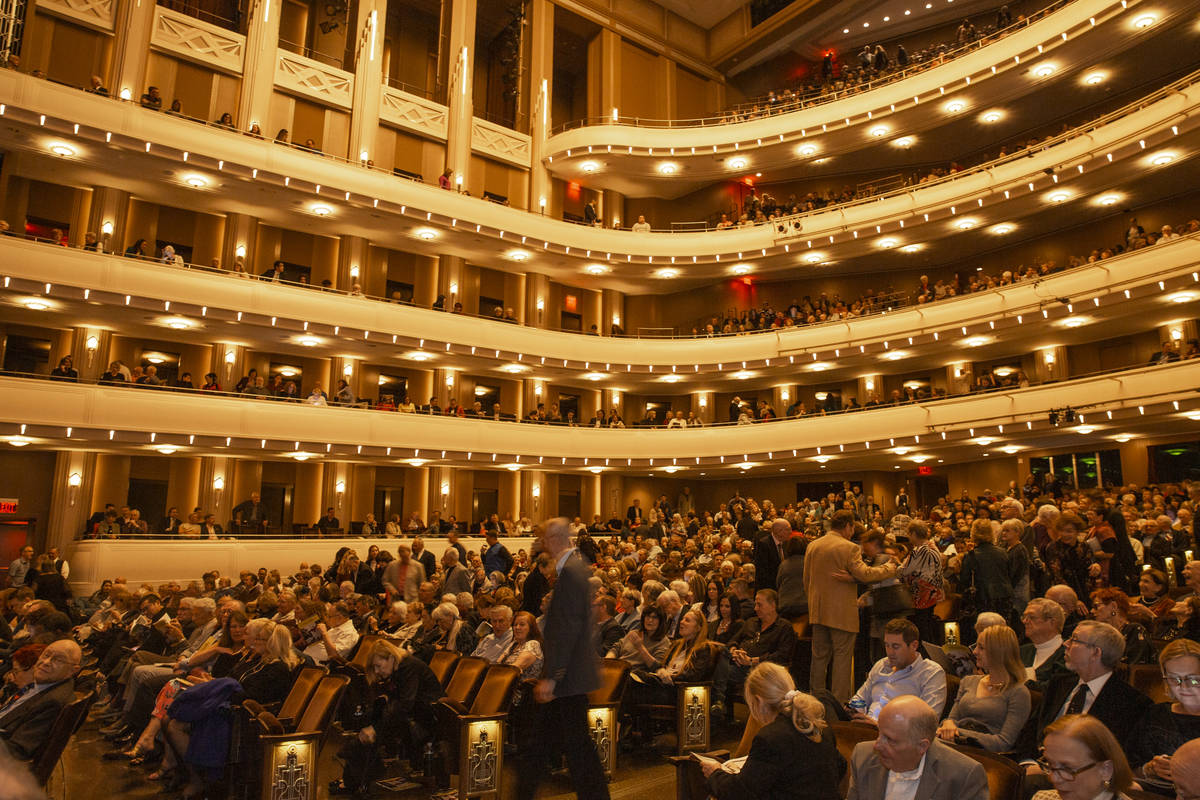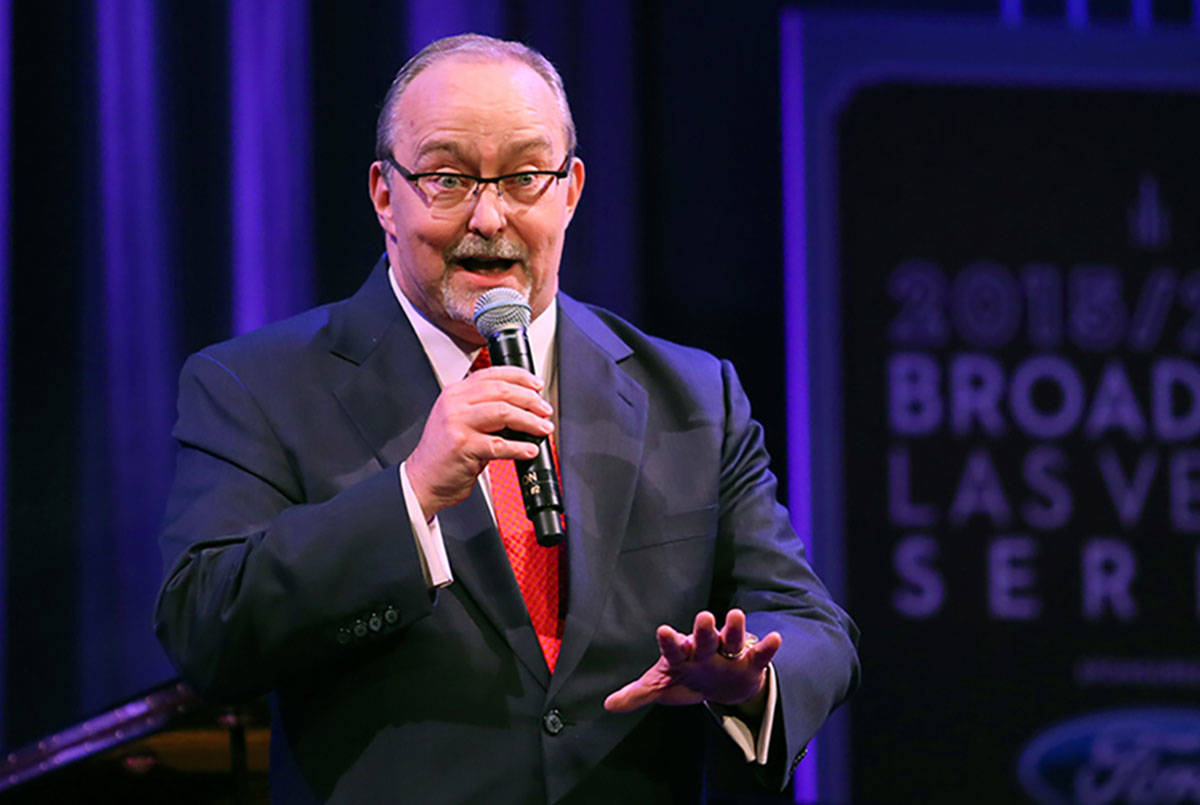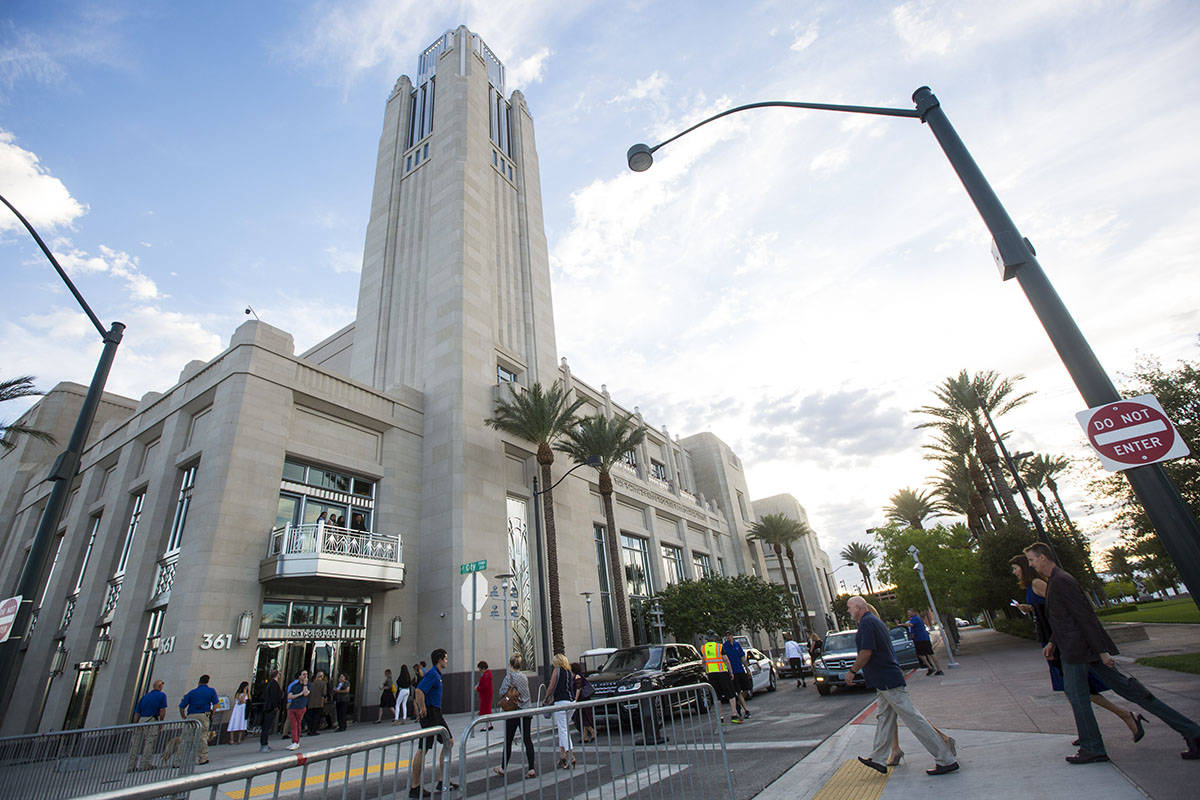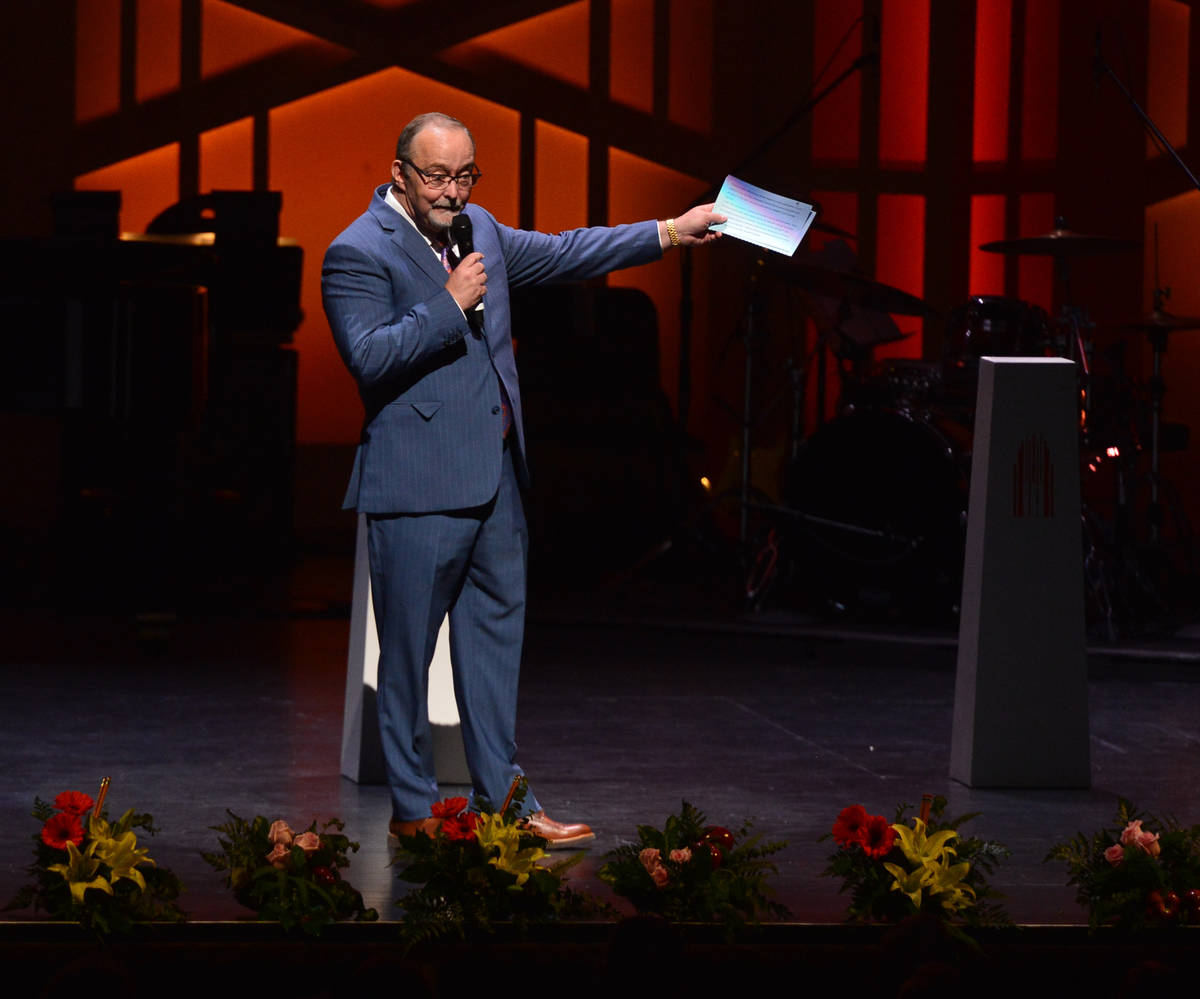Smith Center president, performers and community leaders react to extended closure
The day after announcing that The Smith Center would remain dark indefinitely, President and CEO Myron Martin struggled to come up with the words for what he was feeling.
“I’m still letting everything soak in,” Martin says. “I’m cathartic about parts of it. I’m happy and I’m sad. We know we’re going to reopen. It’s a question of when.”
In trying to sum up the impact The Smith Center has had in its 8-year history, Martin and several theatergoers, performers and community leaders reflected last week on what the center has meant for Southern Nevada’s cultural identity.
“The impact goes way beyond ticket sales,” Martin says. “It’s inspiring people, enriching their lives, giving people new opportunities to engage with fans and neighbors. All the educational components with Clark County students. When I think about the extraordinary work we’ve done, it brings me great joy.”
On Wednesday, Martin announced that the downtown performing arts theater would stay closed as the coronavirus pandemic continues to prevent large gatherings. It went dark in March, ahead of its last showing of the Broadway series, “Once on This Island.”
Economic challenges
Because of the reality of social distancing, Martin says it isn’t financially plausible for the theater to open any time soon.
“If you have to space people 6 feet apart, it comes out as blocking out two rows, the third row has 30 percent of the seats, then block off the next two rows …,” Martin explains. “We end up with 25 percent capacity. Depending on the shows, it can take 75 percent of the seats just to break even.”
He says the other half of the problem may be even more important — that the joy and magic of theater comes from being surrounded by people and having a shared experience.
“You laugh and everyone around you laughs. You cry and realize you’re not alone. The magic of theater requires a shared experience,” Martin says. “I don’t mind saying that I tear up thinking about this situation we’re in. And what it will be like when we’re all back together.”
The Smith Center’s reopening is also contingent on touring shows returning to the road. That will take time as well, as the productions will depend on audiences having confidence to return to the theater.
When asked what The Smith Center’s temporary closure will mean for Las Vegas, Martin is unsure where to start.
“There’s the number of people who come and pay for tickets. And they go to dinner before or a drink after. The economic impact for the city is huge,” Martin says. “But I’m still thinking about Frankie Moreno and Clint Holmes and all the incredible singers and musicians not getting to work at The Smith Center, and that’s eating away at me. There’s all the ticket-takers and stage hands and amazing people who are furloughed and that breaks my heart. When we reopen, and we know that a few months pass pretty quickly, how great that will be.”
Community reaction
Across the Las Vegas Valley, those who’ve performed at the center and community leaders reacted to the extended closure.
Las Vegas Ward 5 Councilman Cedric Crear is one of the founding board members.
“The Smith Center was built to bring art and culture to the community,” he says. “It’s more than just a venue. It truly is a community. It appeals to everybody. That’s the tough part. When it goes away, it takes a part of the community.”
When composer Keith Thompson moved to Las Vegas in 2004, he was sure there was a place for ballet and philharmonic, but he didn’t know where to find them.
“I remember being told that they were building a new arts center. I said it’ll never go,” Thompson says. “And then it blew the roof off this town.”
Thompson organizes, hosts and often performs at the monthly Composers Showcase at The Smith Center’s intimate Myron’s Cabaret Jazz. “People had a hunger for performing arts. And the rest is history. I can’t remember what Las Vegas was like without it.”
Clint Holmes was the first resident headliner of The Smith Center’s smaller venue.
“I was brought in to talk about the height of the Cabaret Jazz stage. It’s not just a place I performed. I felt very much on the ground floor,” says Holmes.
Holmes has performed all over the world. He says that, prior to The Smith Center opening, jazz and cabaret artists didn’t really have a place to play here.
“When the Smith Center came to fruition, it gave status to Las Vegas. We now have a performing arts center where artists all over the world can perform,” Holmes says. “It might be the most important edifice in our city.”
While Holmes says the theater attracted artists by lending credibility to the city, Lacey Huszcza, executive director of the Las Vegas Philharmonic, says the inverse is also true.
‘It feels prestigious’
“It changes the internal perception,” she says. “It feels prestigious. It helps an art organization, one that may be growing, to feel like a substantial part of the community.”
Huszcza says that the grandeur of the building has had a huge effect on lending credibility to the Philharmonic, Nevada Ballet Theatre and even smaller local companies that perform semi-regularly.
“The prolonged closure is hard. It changes the way we as art organizations are able to present our art form to the community.”
The center closed ahead of the Las Vegas Philharmonic’s April 4 and May 9 concerts.
“I feel for Myron,” says music director Donato Cabrera. “The Smith Center is a jewel in the arts and cultural scene in Las Vegas.”
‘The crown jewel’
Nevada Congresswoman Dina Titus has attended performances at Reynolds Hall and Cabaret Jazz.
“The beautiful architecture, amazing performances and unique educational opportunities make The Smith Center the crown jewel of Southern Nevada’s cultural scene,” says Titus. “I’ll continue to fight in Congress to make sure that cultural institutions like The Smith Center get access to relief.”
Troy Heard, artistic director for Majestic Repertory Theatre, also says the center is a jewel.
“When I moved to Las Vegas, this was the largest city I lived in that didn’t have a performing arts center that could handle Broadway tours. It wasn’t a thing 10 years ago,” he remembers.
Heard says that The Smith Center’s opening gave validity to Las Vegas as a theater city. Those who’ve attended performances there, he says, realize they like theater, and then branch out to other facilities, such as Majestic.
“It’s a local institution. To see it not operate for so long, it’s heartbreaking,” Heard says.
Since 2012, The Smith Center has been the performing home to Nevada Ballet Theatre.
“I was so impressed the first time I saw it,” artistic director Roy Kaiser says. “It’s a beautiful venue to work in and beautiful venue for the public.”
Kaiser was aware of theater closings around the county and figured The Smith Center would be one of the last facilities to reopen.
“Artists are resilient. And art is resilient,” Kaiser says. “We’ll get creative and figure out ways to carry on in some fashion.”
Contact Janna Karel at jkarel@reviewjournal.com. Follow @jannainprogress on Twitter.
How to help
The Smith Center has canceled or postponed over 150 performances, totaling $4.5 million in lost revenue. It has launched a fundraising initiative, the Road to Reopening Fund. Donations can be made at thesmithcenter.com.














































